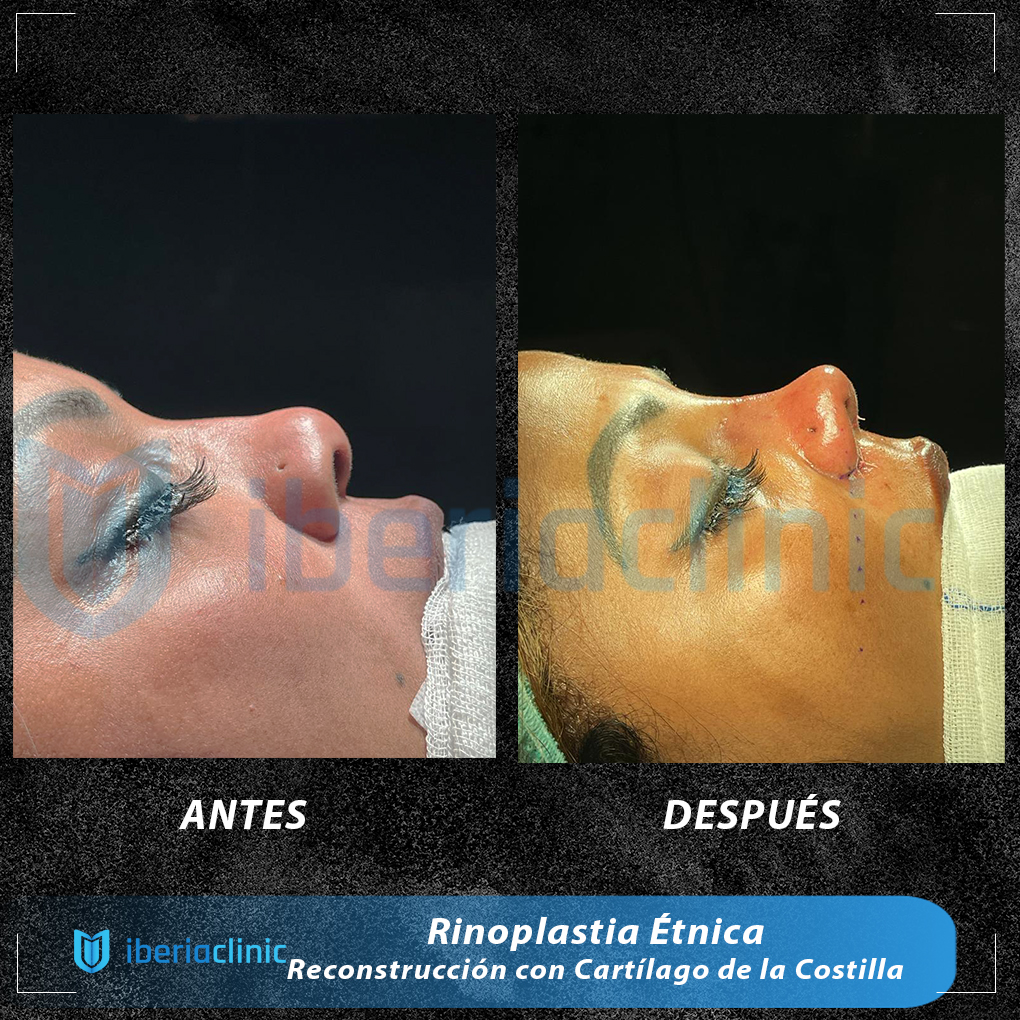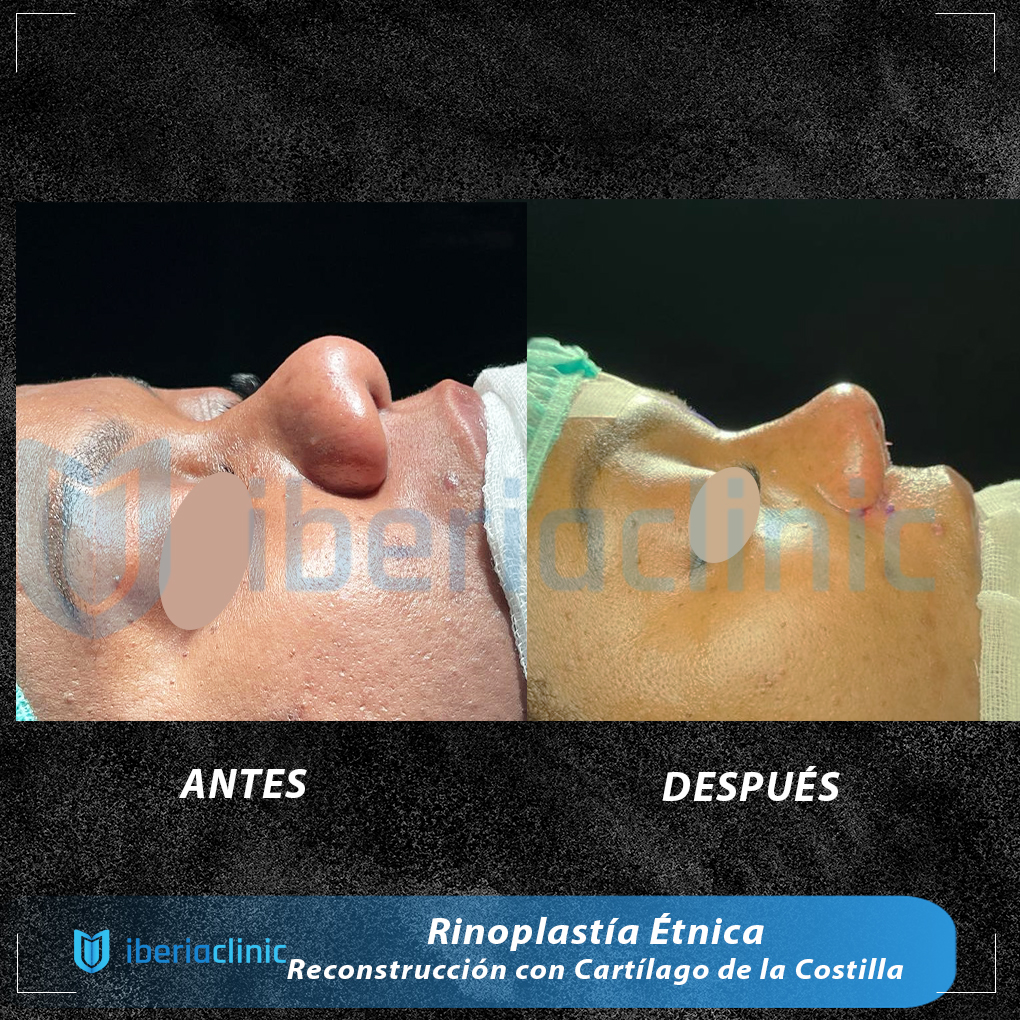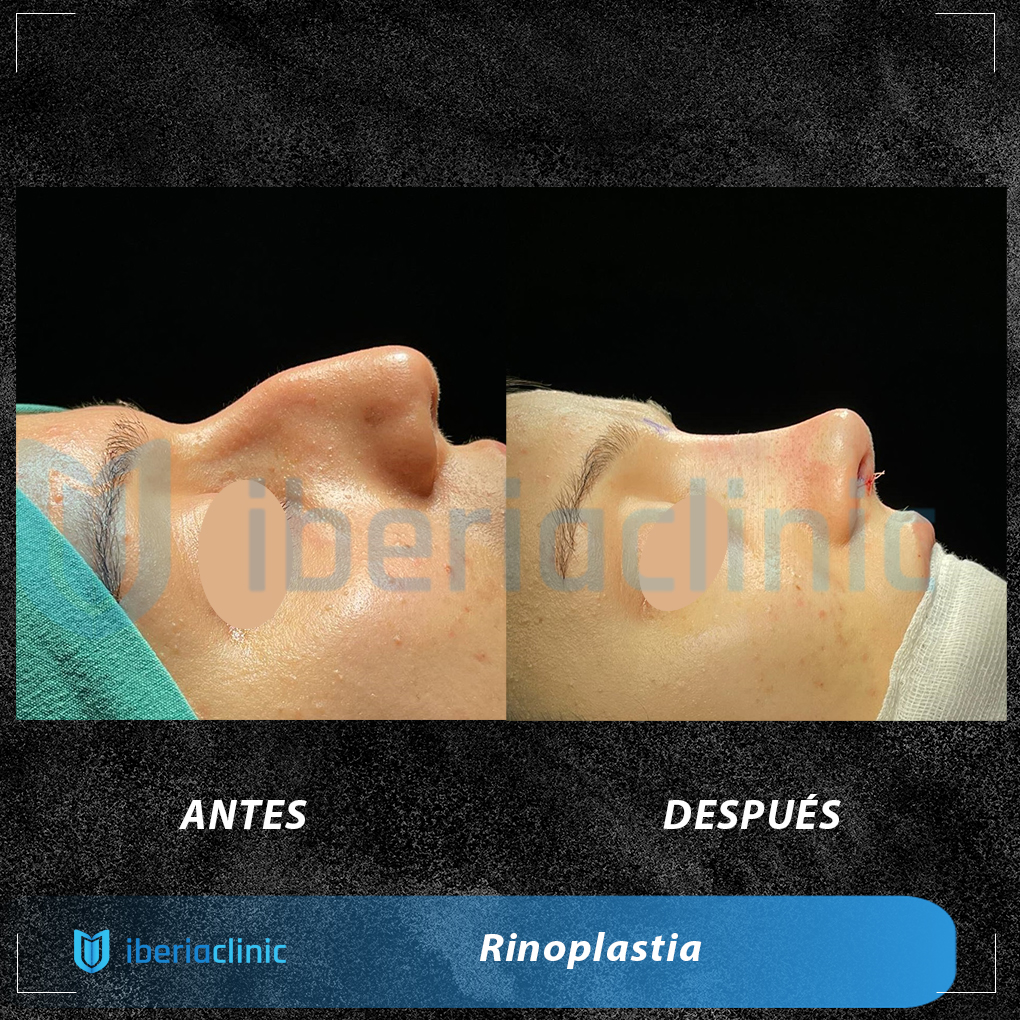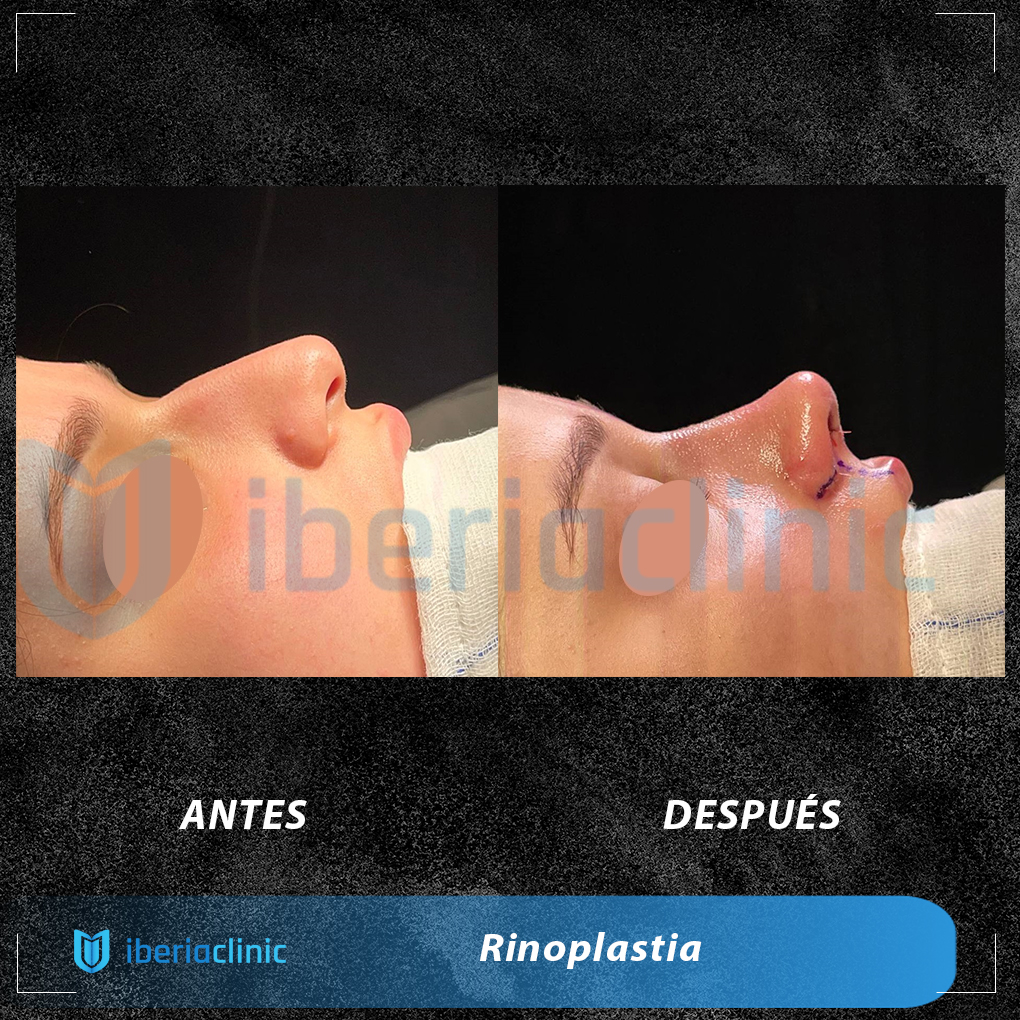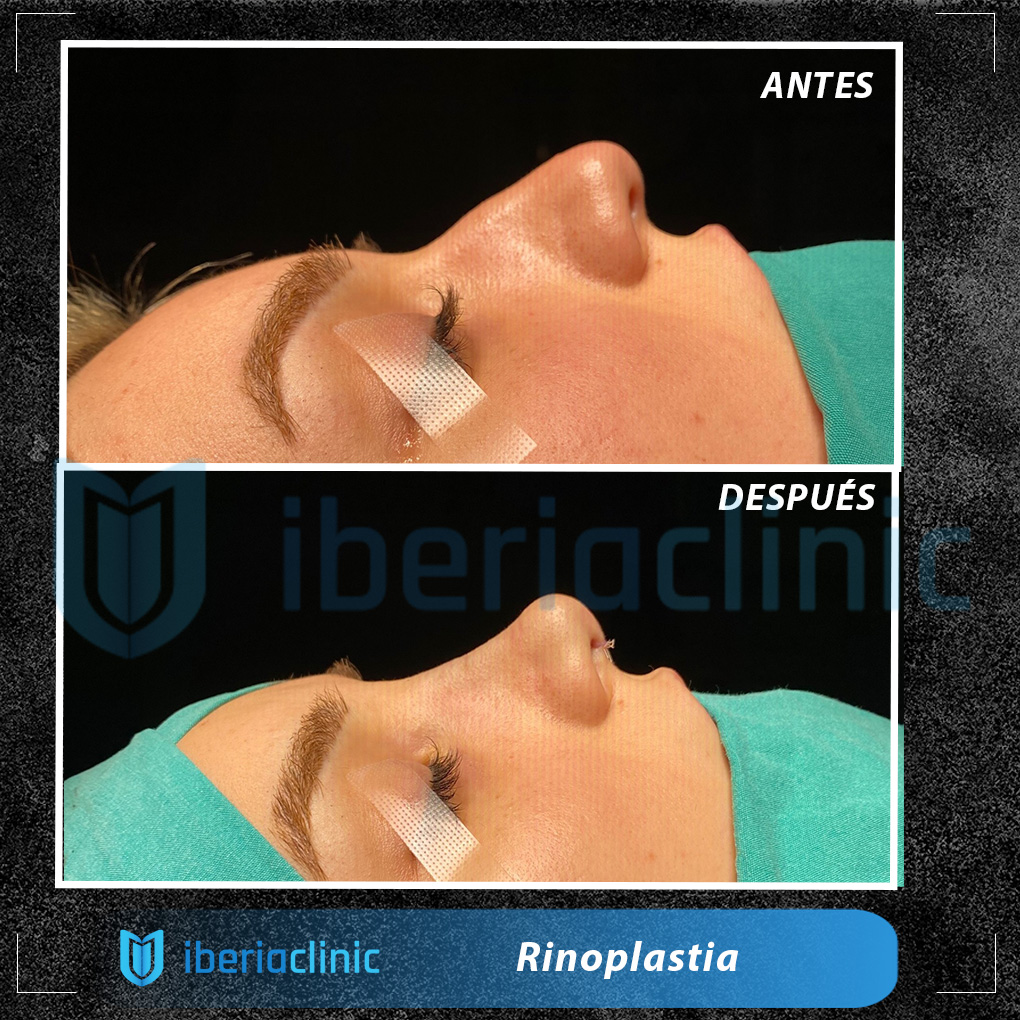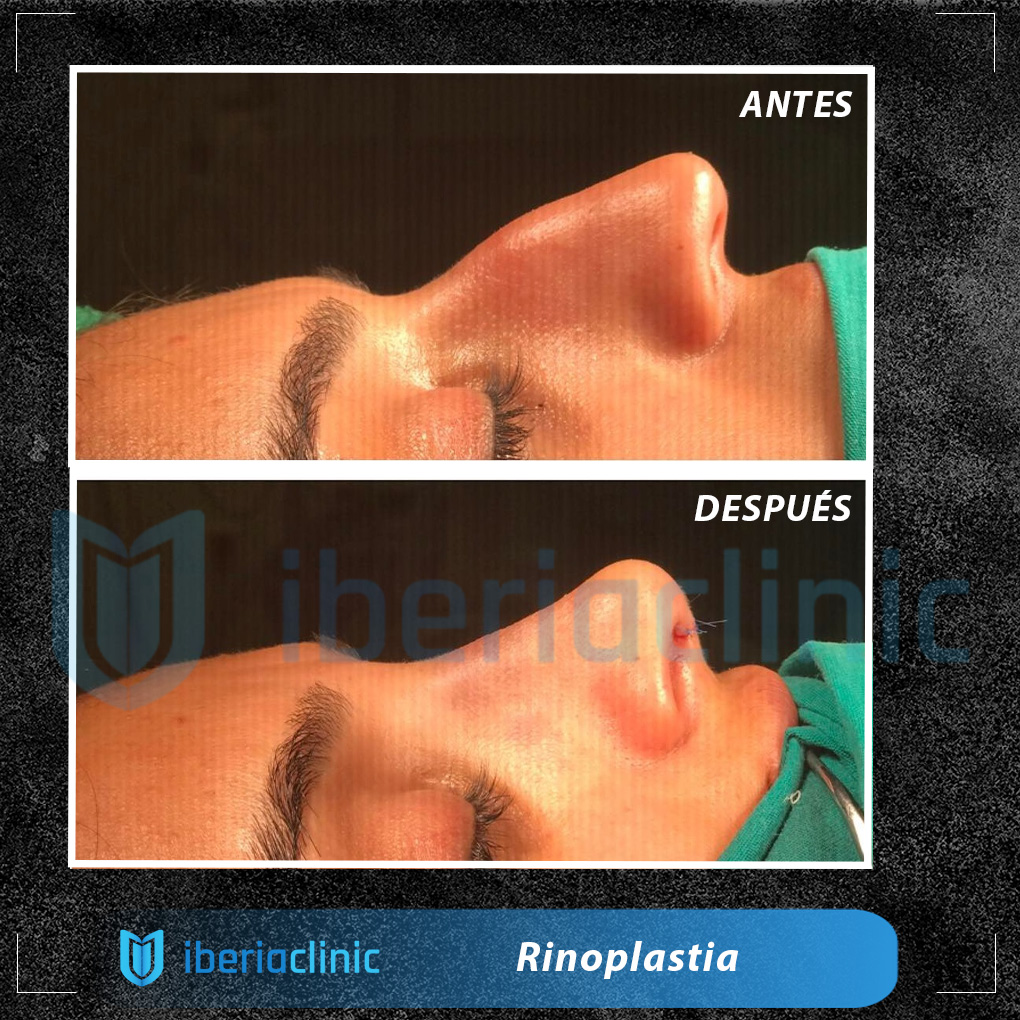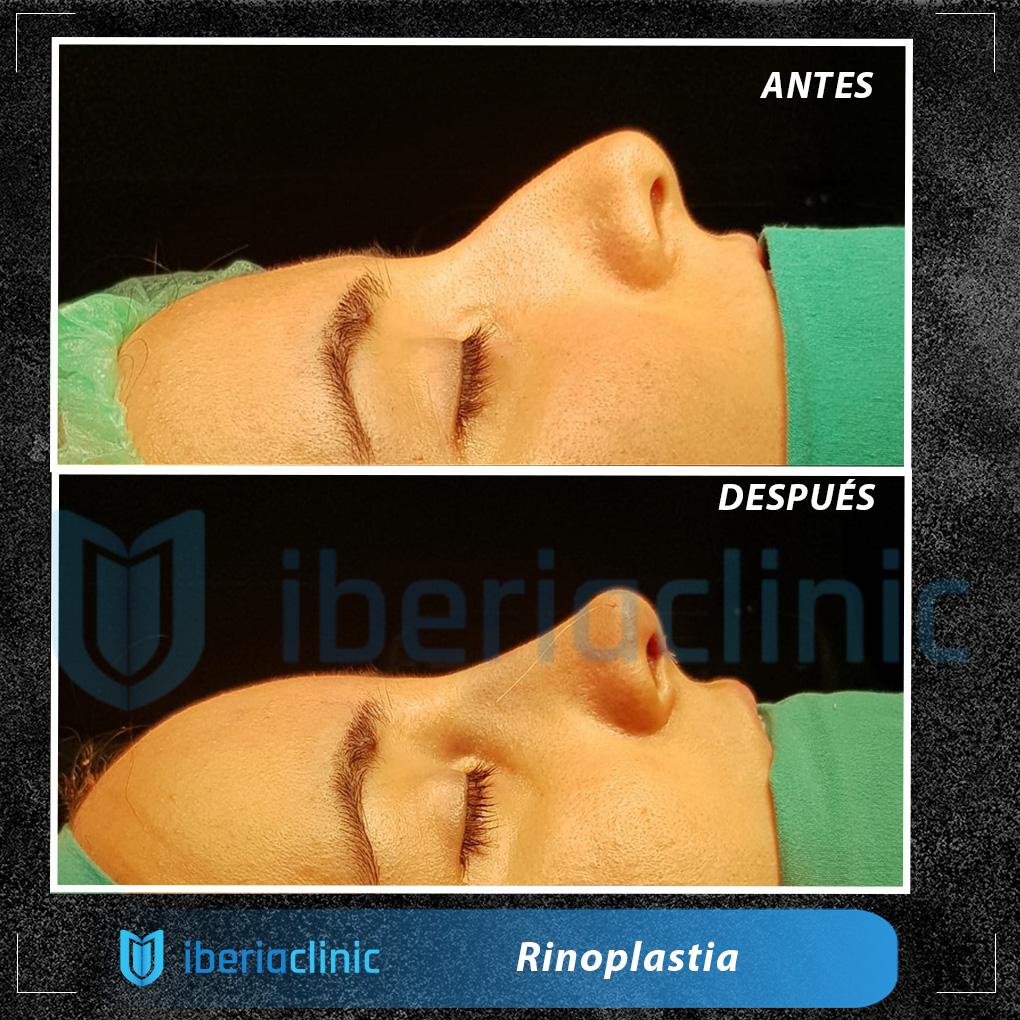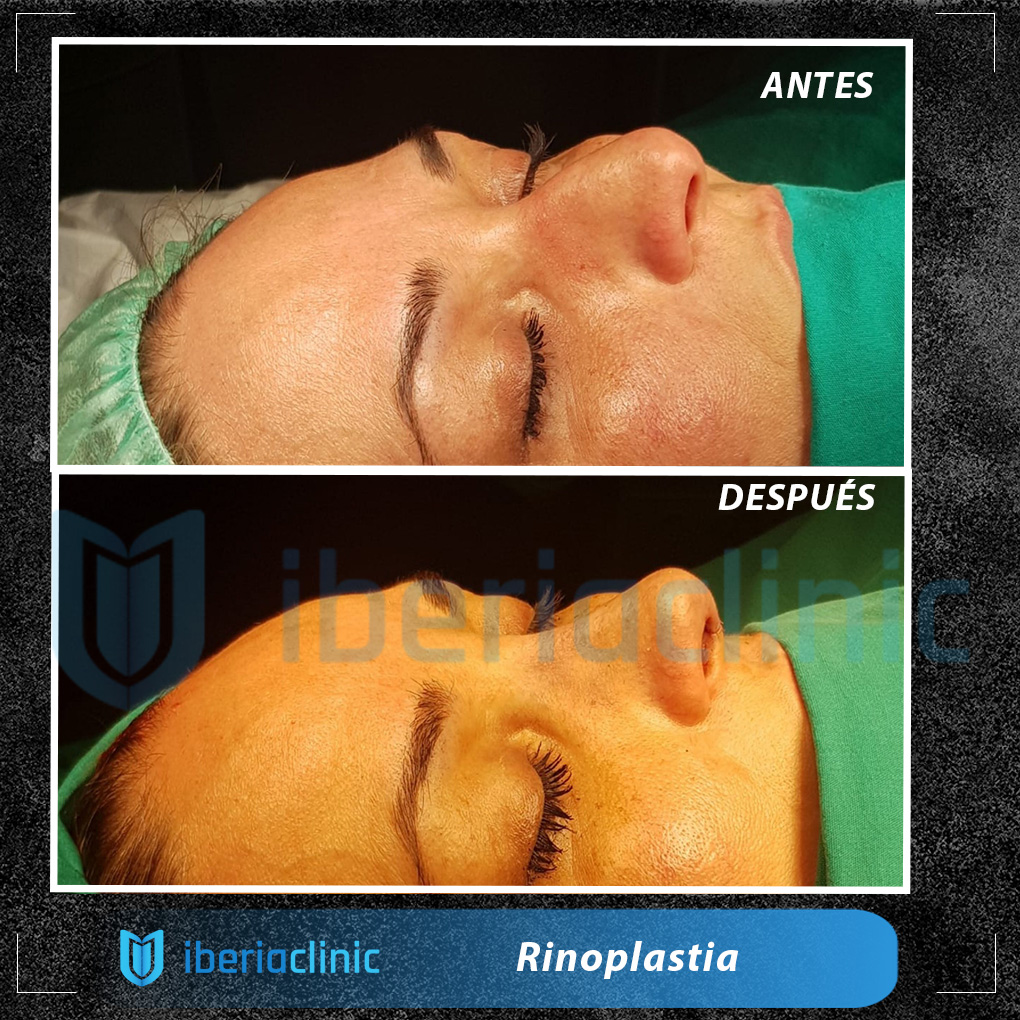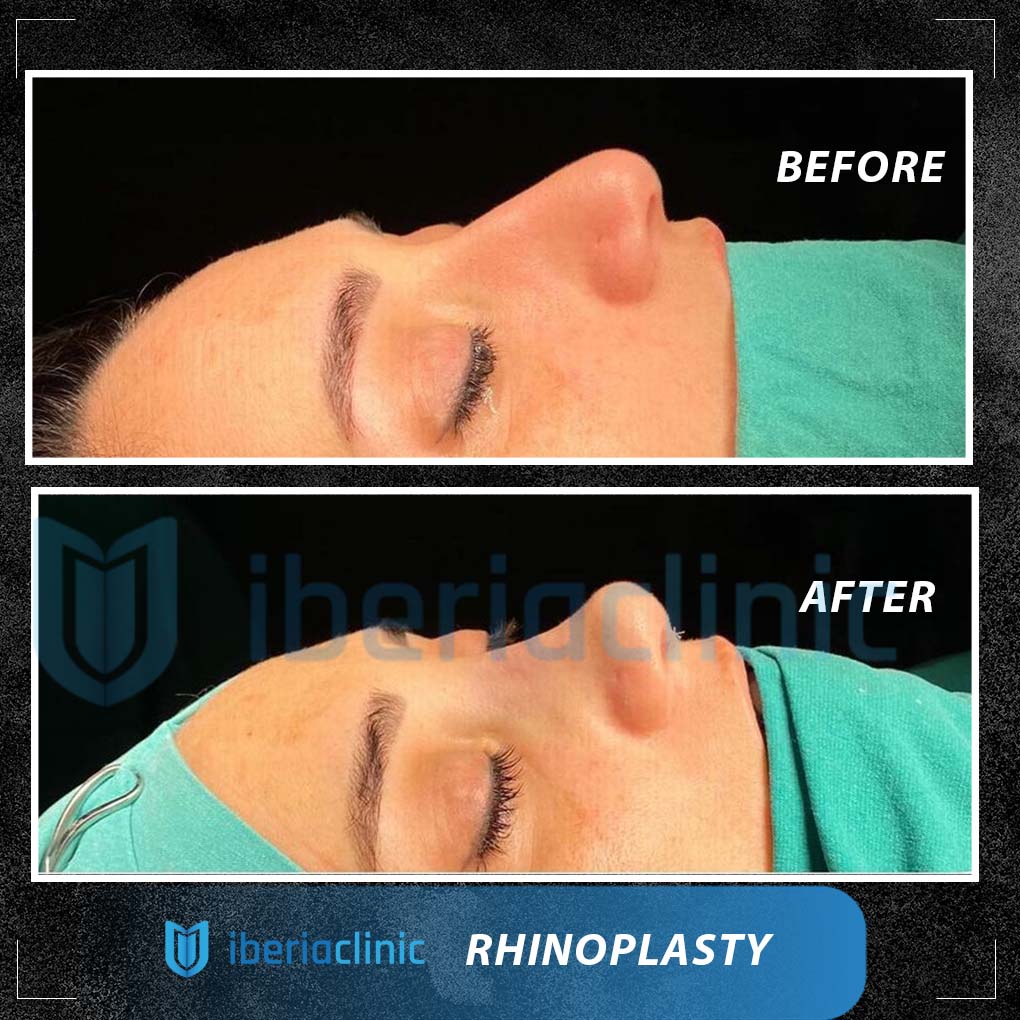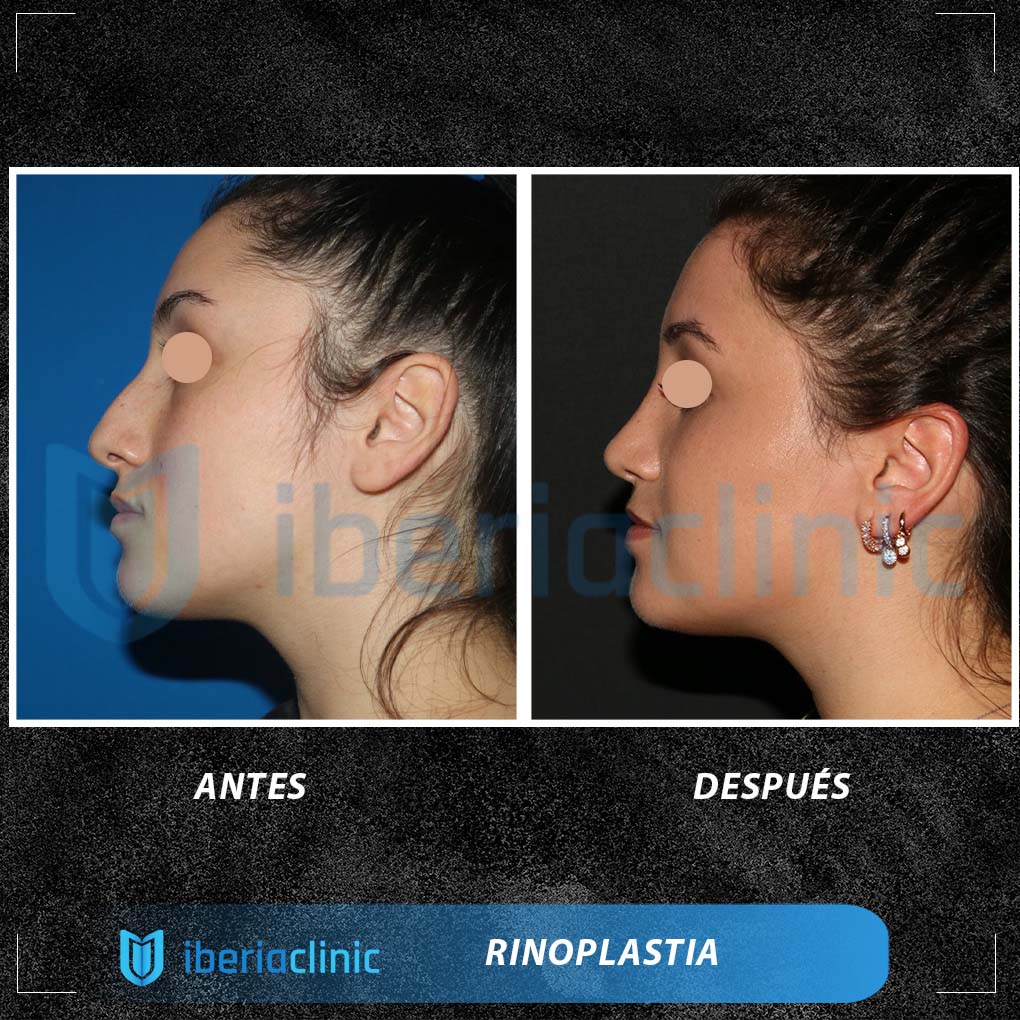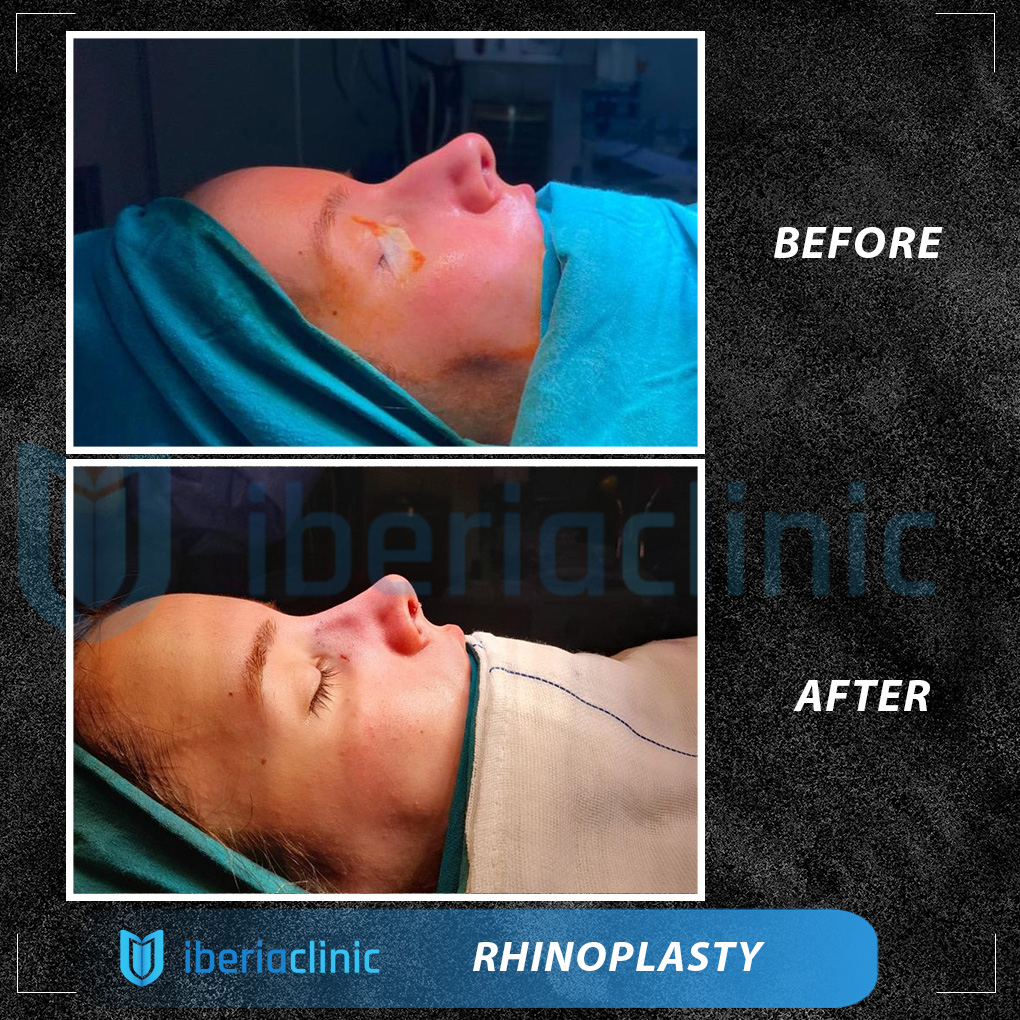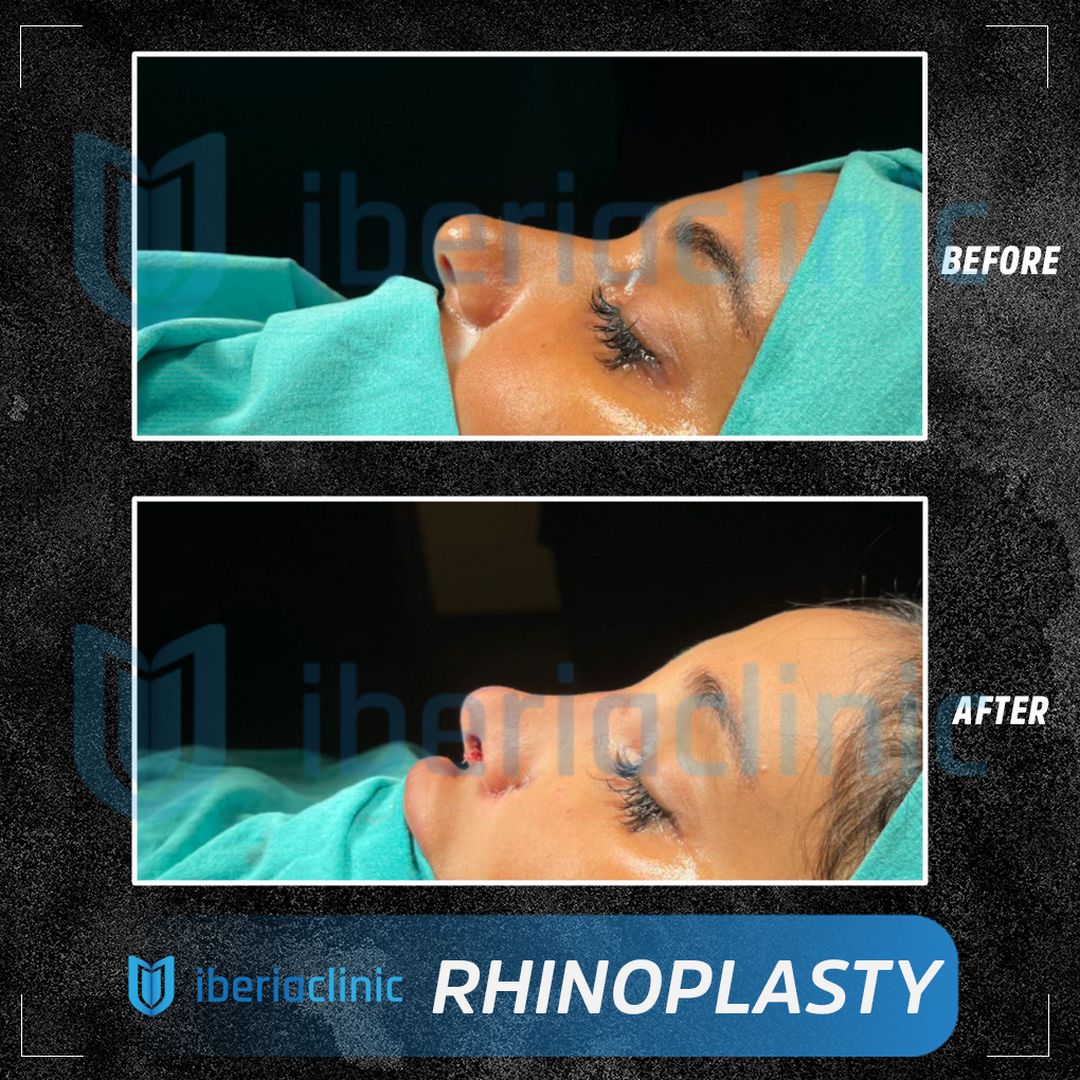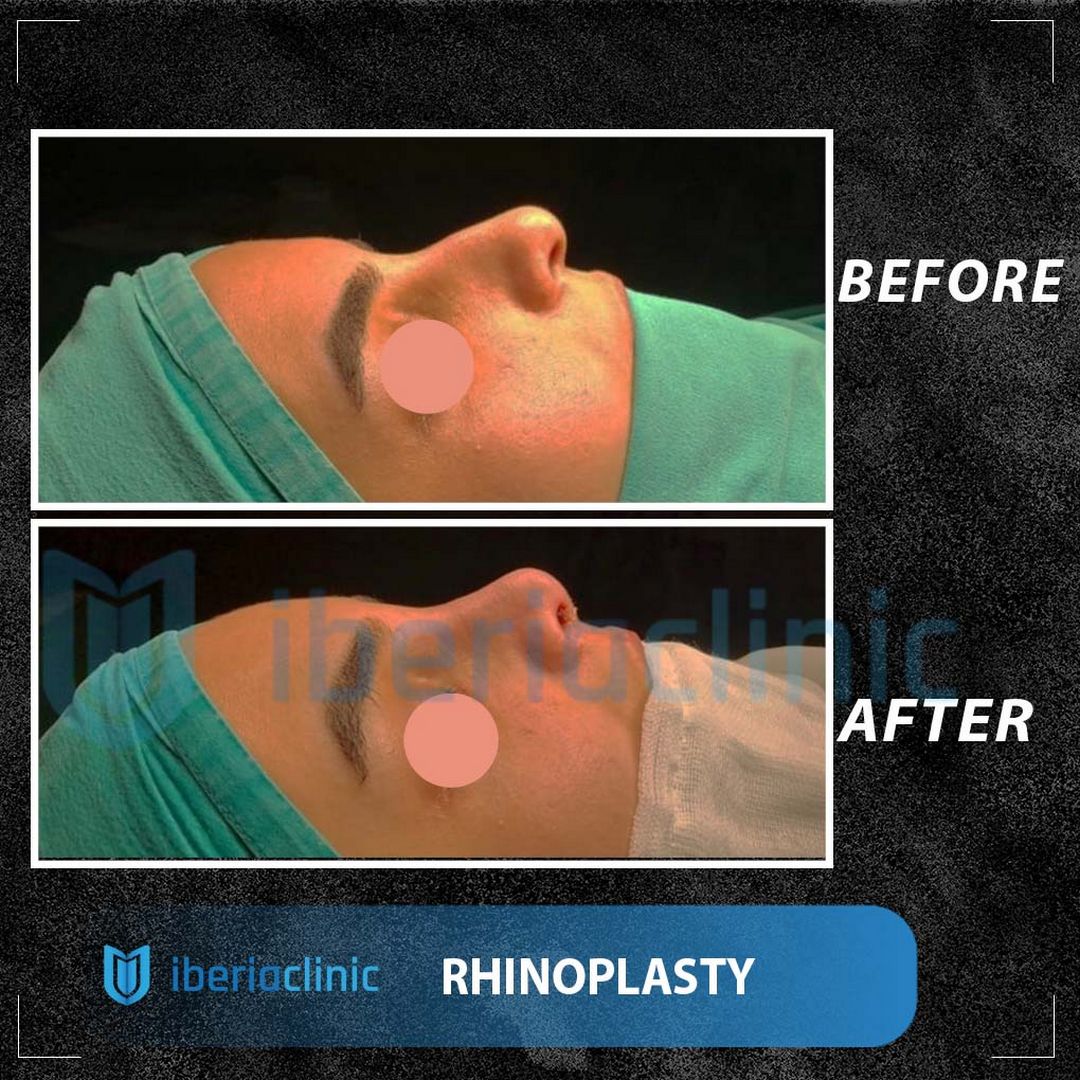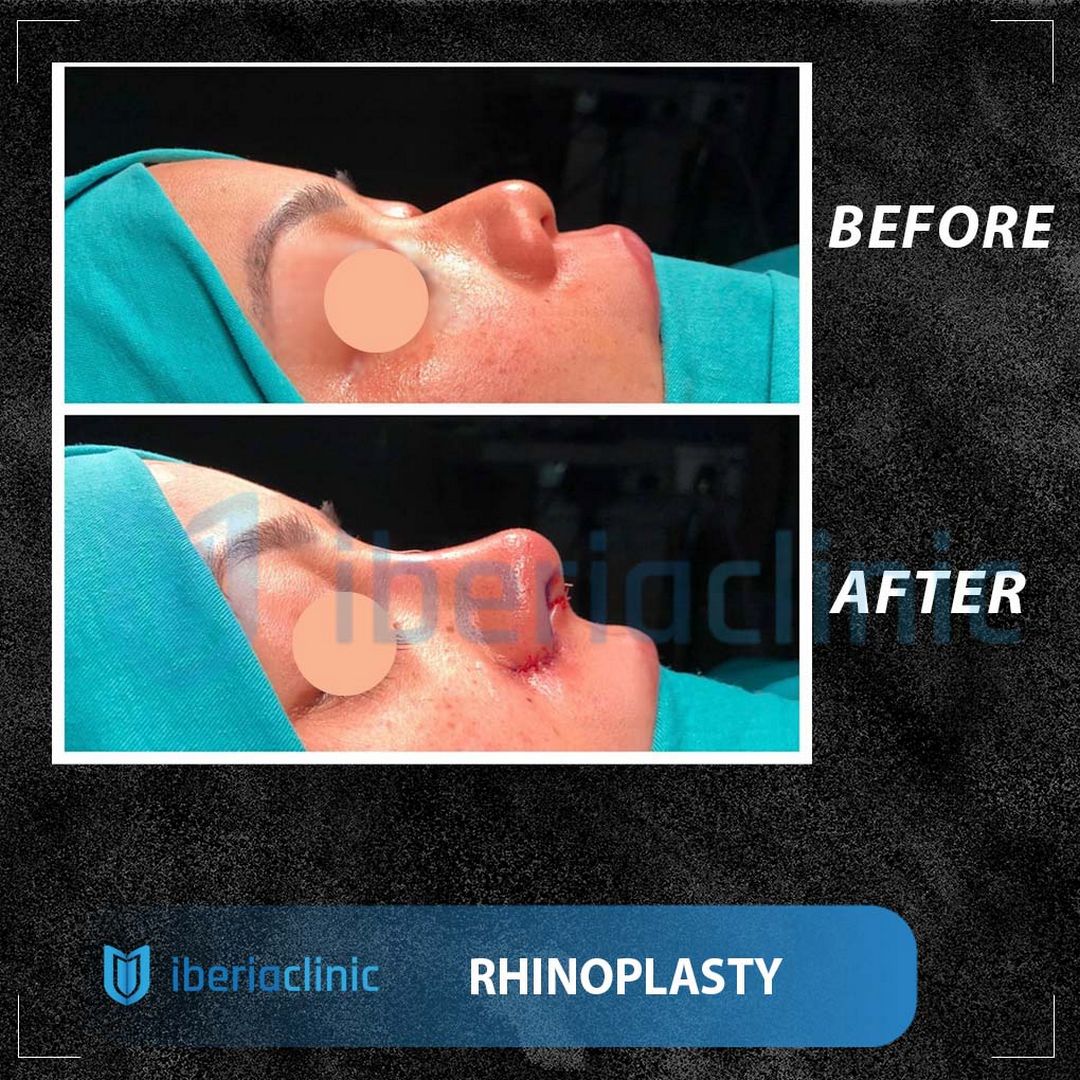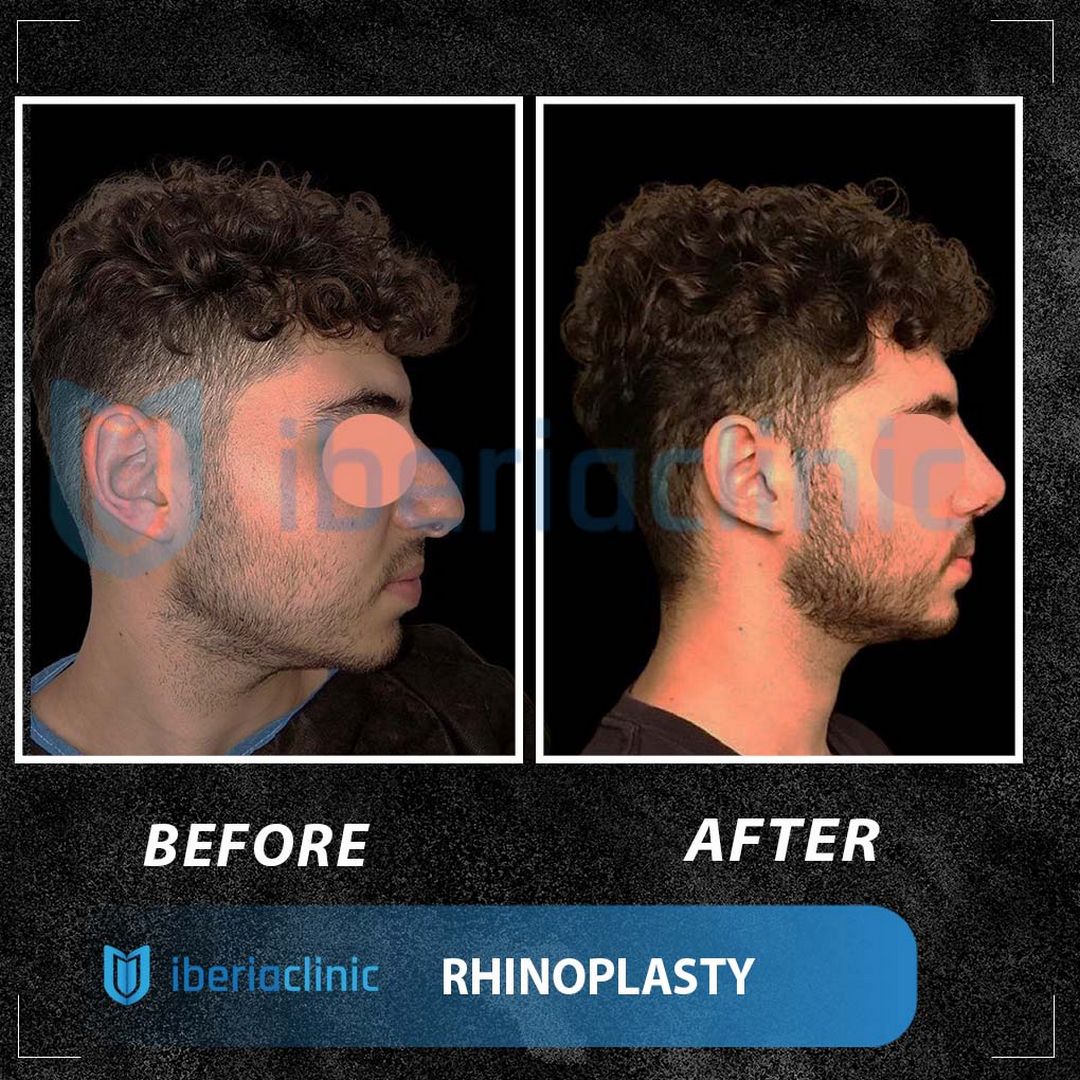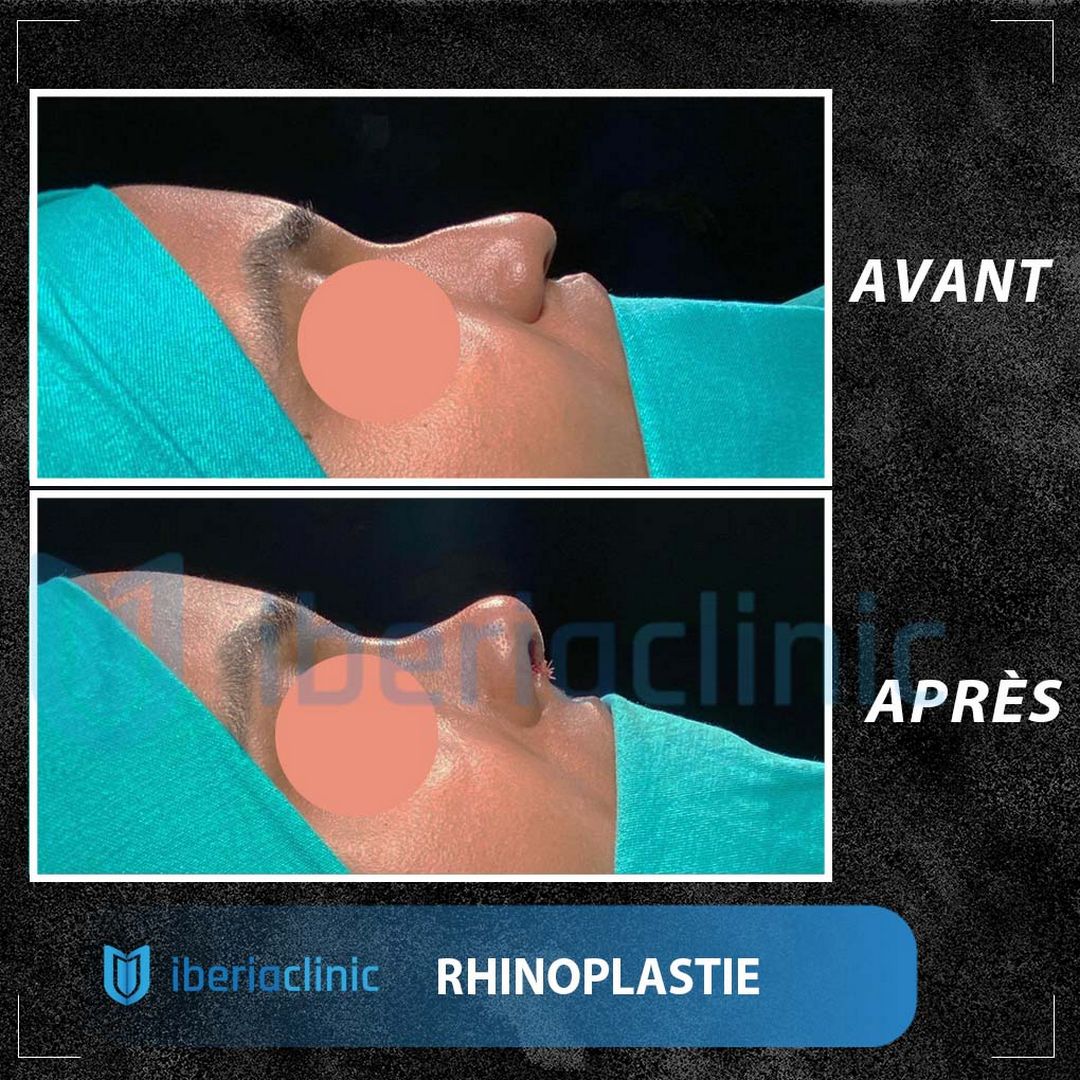Rhinoplasty
What is Rhinoplasty Surgery (Nose Operation)?
Rhinoplasty surgery, also known as a nose job or nose job, is a surgical procedure that reshapes the external structure of the nose.
It can help reduce the size of the nose, change the shape of the bridge or tip, and even correct structural defects. This surgery is often requested by people who are unhappy with their current facial features or who have suffered trauma to their nose. Rhinoplasty can also help improve breathing problems caused by structural defects in the nose.
The cost of rhinoplasty surgery varies depending on the complexity of the procedure.
Why IBERIA CLINIC
 Change Your Life Lorever
Change Your Life Lorever
Deciding on a physical change is sometimes difficult. If you suffer psychologically and are not happy with your body, with your smile or with your face or hair, do not hesitate to make the decision to change everything forever. As Iberia Clinic we serve you from the beginning to the end to make your dreams come true. Each one of us deserves to be happy and here we fulfill it.
 Trust Our Experts
Trust Our Experts
Iberia Clinic unifies services such as cosmetic surgery, hair transplant, dental treatment, bariatric operation and medical aesthetics under one roof. For each operation they are attended by the surgeon, doctor or dentists with international experience and one of the best in Istanbul. We work with hospitals that have internationally recognized certificates.
 Personalized Attention
Personalized Attention
Our medical consultants are native speakers of their language and thus we can facilitate perfect communication and make them feel at home. When you return to your country we will also keep in touch with you continuously.
 Patient Satisfaction
Patient Satisfaction
Our mission is to satisfy your needs and offer you personalized service and attention, creating a unique experience during your stay in Istanbul. Our success is that our patients are satisfied. In Google Review we have 5 Stars from 320 comments so we can assure you 100% Satisfaction on your trip with Iberia Clinic.
What is Ultrasonic Rhinoplasty?
Ultrasonic rhinoplasty, also known as endoscopic rhinoplasty, is a rhinoplasty technique in which an endoscope and an ultrasonic device are used to perform the surgery. Endoscopic rhinoplasty is performed using very small incisions, which means there is less visible scarring and a shorter recovery time. The endoscope is used to visualize the internal structures of the nose, while the ultrasonic device is used to cut and shape the bone and cartilage of the nose.
Endoscopic rhinoplasty is used to correct aesthetic problems, such as a wide nose, a protuberance at the tip of the nose, a depression at the tip of the nose, a deviated nose, among others. It is also used to correct functional problems of the nose, such as nasal obstruction and difficult breathing. It is important to note that not all patients are candidates for this technique and it is necessary to speak with a surgeon specializing in nasal surgery to determine if it is the best option.
What is Septoplasty?
Septoplasty is surgery to correct a deviated nasal septum (nasal septum), also known as a deviated septum. The nasal septum is a cartilaginous and bony structure that divides the nose into two cavities. A deviation of the nasal septum can cause difficulty breathing, nasal obstruction, rhonchi, postnasal drip, headache, among other symptoms. Septoplasty is surgery to correct these problems and improve respiratory function.
The surgery is performed through incisions inside the nose, through which the surgeon can access the nasal septum and reposition it in its correct position. The surgery can be performed under local or general anesthesia, and can last between one and two hours. It is important to mention that it is sometimes performed in conjunction with a rhinoplasty (cosmetic surgery of the nose) to improve the aesthetic appearance and nasal function at the same time.

What Results Are Obtained With Rhinoplasty Surgery?
The results of the surgery may vary depending on the patient and the type of surgery performed.
In cosmetic terms, the results of a rhinoplasty can include:
- A more symmetrical and proportional nose to the face
- A thinner or narrower nose
- A more defined or elevated nasal tip
- A nose more aligned with the rest of the face
- Correction of a depression in the tip of the nose
- Correction of a bump on the nose
- Improvement in the appearance of scars
Am I a Good Candidate for a Rhinoplasty?
Rhinoplasty, also known as a nose job, is a surgical procedure used to change the shape, size, or structure of the nose. It is one of the most popular cosmetic surgeries in the world.
A good candidate for a rhinoplasty is a person who:
- You have functional problems with your nose, such as difficulty breathing due to a nasal deformity.
- He has a disproportionate nose in relation to the rest of his face.
- It has a drooping “nose tip” or a prominent nasal dorsum.
- He has an asymmetrical nose.
- You have a large or wide nose in relation to the rest of your face.
- You have a personal desire to change the appearance of your nose.
It is important for a patient to have realistic expectations and be prepared for the recovery process.
It is recommended that the patient speak with an experienced, board-certified plastic surgeon to determine if they are a good candidate for rhinoplasty and to discuss the options available and the risks and benefits of the procedure.

Recommendations Before Rhinoplasty
- Your surgeon will share with you what to pay attention to before rhinoplasty surgery.
- You should pay special attention to your health before cosmetic surgery to avoid illnesses such as the flu.
- It is not recommended to use aspirin and drugs with similar ingredients one week before surgery.
- If you have the possibility of catching a cold or flu, or if you had these illnesses before surgery, you should give your doctor the necessary information.
- Do not eat anything or drink water from 8 hours before the scheduled time for your surgery.
- You should not wear metallic elements in the operating room (rings, necklaces, earrings, piercings…)
- If you are pregnant or think you are, you must notify us.
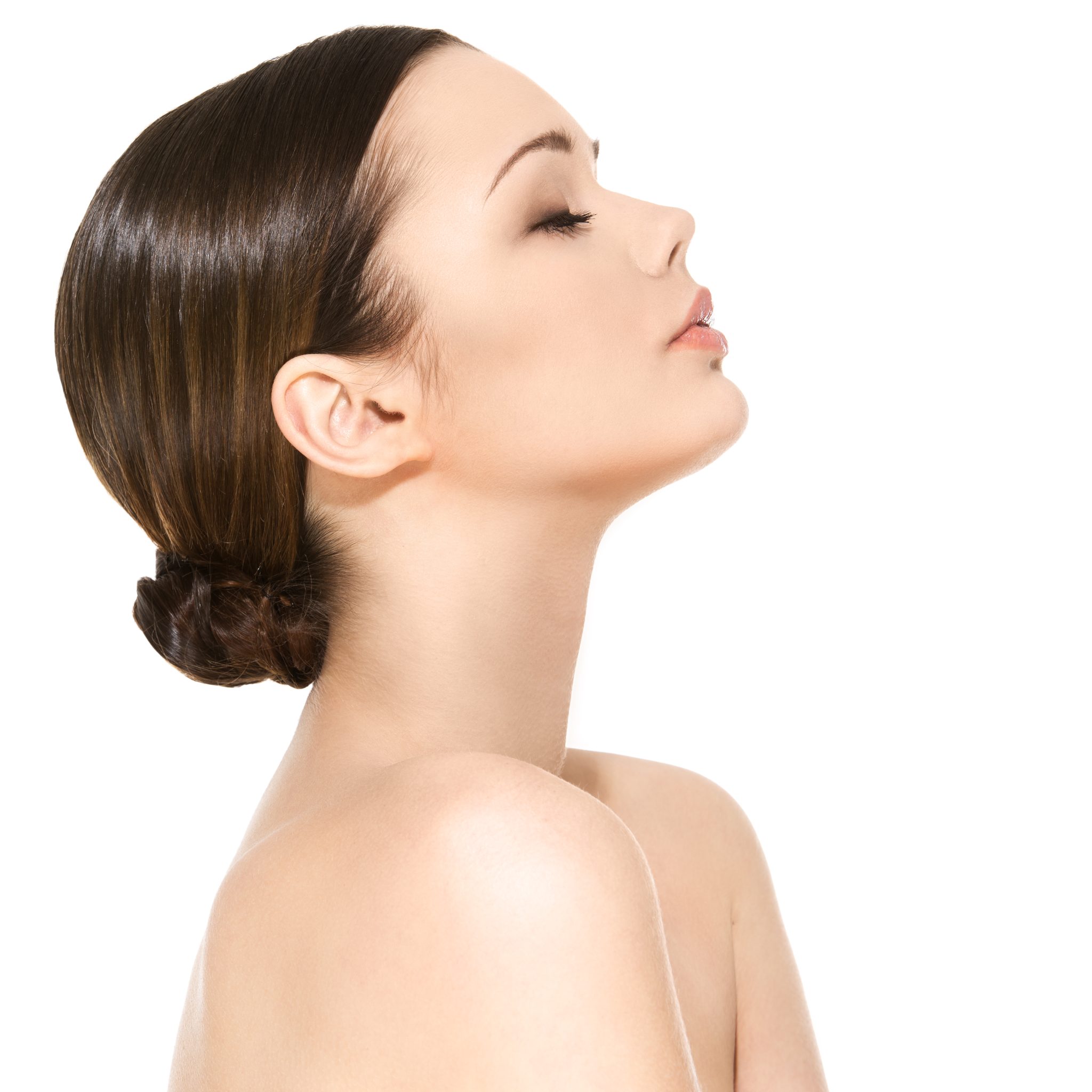
Before After Results
Process Before Surgery
Physical Exam: In the exam phase, the structure of the nose is first examined. The technique to be preferred is determined according to whether the nasal skin is thick or thin, and this determination is made by your surgeons.
Study and Planning by Computer: In the study, which will be carried out in a digital environment, patients are presented how to intervene in the structure of the nose and how the nose will look after this intervention.
Determining Ideal Sizes: Ideal nose sizes are determined according to the shape of your face and the placement of other organs on your face.
Anesthesia Examination: Although general anesthesia is the most preferred method of anesthesia in rhinoplasty operations, some doctors also prefer local anesthesia. Along with the anesthesia examination, blood tests are also done to ensure the safety of the operation.
The Rhinoplasty Recovery Period
The recovery period for rhinoplasty varies from person to person and depends on several factors, such as the technique used, the extent of the surgery, and the general health of the patient. However, in general, the recovery is usually like this:
- The first day after surgery: It is normal to feel pain, swelling and bruising in the nose and face. Your surgeon may apply a nasal splint or nasal bandage to help reduce swelling and protect your nose for the first week after surgery.
- The first week: Swelling and bruising will gradually begin to subside. The patient may experience moderate pain and discomfort, and may need pain relievers to control the pain. It is also normal to have difficulty breathing through your nose during this first week.
- The first and second week: The patient can return to their normal activities, but should avoid physical exertion and any activity that may cause pressure in the nose. It’s also important to avoid any activity that can increase your blood pressure, such as lifting weights or strenuous exercise.
- The 3rd and 4th week: Swelling and bruising should have decreased significantly. The patient can return to most normal activities, but should continue to avoid physical exertion and any activity that may cause pressure in the nose.
- After the fourth week: Most patients can return to their normal activities, including exercise. Although the nose may still be slightly swollen, most patients can see the final results of the surgery.
It is important to follow the instructions and recommendations of the plastic surgeon to ensure a successful recovery and avoid possible complications.
It is also important to note that the healing process can take several months, some slight changes may occur during that time, and it may take up to a year for final results to be seen.
How to Take Care of Yourself After Rhinoplasty
After rhinoplasty, it is important to follow your surgeon’s instructions to ensure a speedy and successful recovery. Some general recommendations for taking care of yourself after surgery include:
- Rest: It is important to get adequate rest after surgery to help reduce swelling and pain. It is advisable to avoid physical activities and efforts for several weeks after surgery.
- Ice: Ice can help reduce swelling and pain. Apply a towel-wrapped ice pack to your nose several times a day for the first few days after surgery.
- Medication: Your surgeon may prescribe pain relievers to control pain. Follow your surgeon’s instructions on how and when to take these medications.
- Cleaning the nose: It is important to keep the nose clean after surgery to prevent infection. Your surgeon will give you specific instructions on how to clean your nose after surgery.
- Avoid smoking and alcohol: Smoking and drinking alcohol can slow healing and increase the risk of complications. It is important to avoid smoking and drinking alcohol for several weeks after surgery.
- Sun protection: It is important to protect the nose from the sun for several months after surgery. Wear a hat or cap to cover your nose when outdoors and apply a sunscreen with a high protection factor to your nose.
- Follow-up: Our medical consultants follow up with our patients, sharing the information with their doctor to ensure that recovery is progressing properly

Revision Rhinoplasty
Revision rhinoplasty is surgery performed to correct problems or complications that may occur after a previous rhinoplasty. It is a more complex and delicate surgery than a primary rhinoplasty, since the surgeon has to work with an already operated nose, and it is possible that there are already scars and scar tissue.
Revision rhinoplasty is performed to correct cosmetic problems such as an asymmetrical nose, a nose that is too long or short, a drooping nasal tip, or a deviated nose. It is also performed to correct functional problems such as nasal obstruction, difficulty breathing.
Is There a Scar After Rhinoplasty?
The location and size of the scar will depend on the type of surgery performed and the individual healing process. However, in most cases, the scars are small and located in inconspicuous places, such as inside the nose or at the base of the nose, where they are less visible.
It is important to speak with the surgeon before surgery to learn more about possible scarring.
How Long Does Rhinoplasty Take?
The duration of a rhinoplasty can vary depending on the type of surgery performed and the surgeon performing it. In general, the surgery can last from one hour to several hours.
Is Rhinoplasty Surgery Painful?
Rhinoplasty surgery can cause some degree of pain and discomfort after surgery. However, the pain is usually manageable with the pain relievers prescribed by the surgeon. There may also be a feeling of pressure in the nose and in the area of the incisions, as well as a feeling of nasal congestion. It is important to follow the surgeon’s instructions to minimize pain and facilitate recovery.
How Much Does Rhinoplasty Cost?
The cost of a rhinoplasty can vary depending on several factors, such as where the surgery is performed, the surgeon performing it, the type of anesthesia used, and the type of procedure performed.
You have to make sure if the price includes all expenses related to the surgery such as hospitalization, anesthesia, hotel accommodation, transfer and translator, among others.
What are the Risks of Rhinoplasty?
Rhinoplasty is a safe and effective procedure, but as with any surgery, there are some risks and potential complications. Some of the more common risks and complications of rhinoplasty include:
Infection:Although rare, an infection can occur after any surgery. If an infection develops, it may be necessary to take antibiotics to treat it.
Bleeding:There may be bleeding after surgery, which may require a second operation to stop it.
Swelling and bruising:It is common for the face and nose to be swollen and bruised after surgery. This can last several weeks.
Changes in the sensation of the nose:The sensation in the nose may temporarily change after surgery. There may be a feeling of numbness or numbness, but this usually goes away with time.
Changes in the sound of the voice:The nose plays an important role in the resonance of the voice, so it is possible for the voice to sound different after surgery. This is temporary and usually returns to normal within a few months.
Scars:Rhinoplasty can leave scars, especially on the inside of the nose. In most cases, the scars are very inconspicuous and go unnoticed.
It is important to remember that each patient is different and that the severity of the complications varies from one person to another, to avoid unwanted results you must choose your surgeon carefully.
Our board-certified surgeons specialize in creating custom treatments to meet your individual needs. We are committed to providing high-quality care and successful outcomes.
Before After Results
REQUEST A CALL BACK
Related Posts

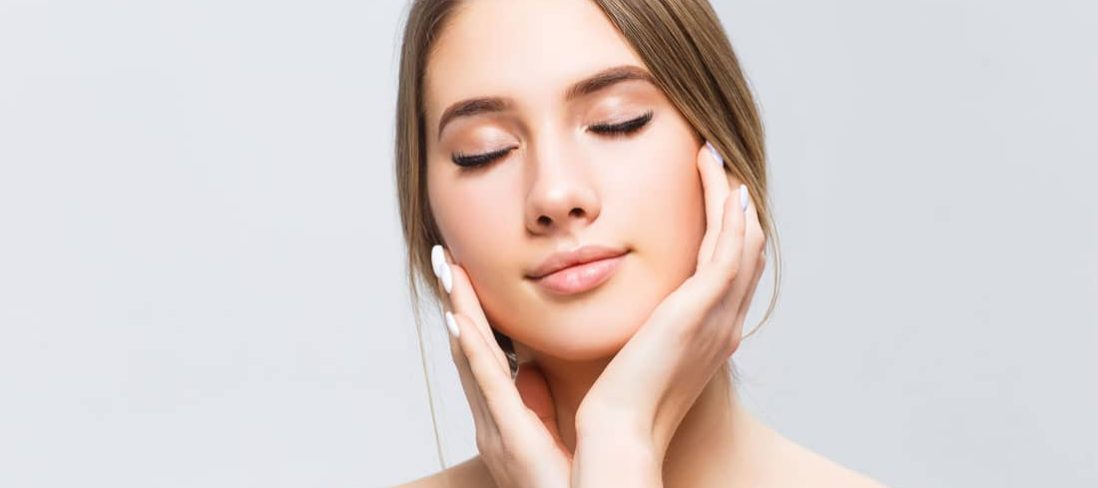
 Change Your Life Lorever
Change Your Life Lorever Trust Our Experts
Trust Our Experts Personalized Attention
Personalized Attention Patient Satisfaction
Patient Satisfaction